Barre Chords
Barre Chords - Pronounced "Bar Chords"
Barre Chords are chords that may seem incredibly hard to play at the beginning.
But once you understand how to play them, it opens up the entire neck to you.
In the open chord section, I mentioned that F and B, were partial chords.
They were parts of a full Barre Chord. That's why I mentioned they are partial chords.
This may seem strange at first, but open chords are actually moveable.
They are simply patterns that can be moved up and down the fretboard.
The same chord pattern, for example E Major, can be moved up 1 fret to form an F Chord.
There are 5 basic repeatable shapes that can be used as moveable chord shapes.
These are the E, G, A, C, and D forms.
An easy way to remember these is to rearrange the letters, which spell CAGED.
If you look at the E Major Chord, 3 notes are fretted, and the other 3 notes are open.
The Low E, B, and high E strings use the guitar's nut as the point where the open notes ring out.
You may have seen a device that some players put on a guitar neck, called a capo.
It is put there to change the key of a song. If the capo is put on the 3rd fret, and you finger a simple E Major chord, you play the E Chord as normal, but the pitch of each note is raised 3 half steps. The chord sound is a G chord.
Below is a photo of a capo on the 3rd fret of the guitar.
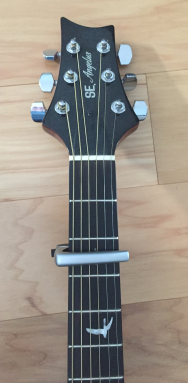
The capo is placed in one location for the whole song, because it's not easy to move while playing.
You can play any open chord and it will be played in the new key (in this case G).
This is because the relative pitch is 3 semitones higher than if the capo is not there.
Thankfully, there is something called "God's Capo" that easily moves anywhere on the fretboard.
You index finger has been called "God's Capo", since it can fret all the strings at once on any fret.
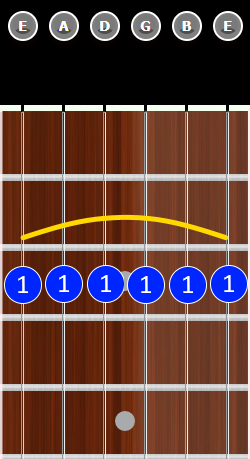
A Barre Chord is a chord formed, with the index finger being used as a moveable capo.
The index finger lays across multiple strings, fretting all those notes.
Your other fingers are used to fret any notes needed to form a chord.
There are 2 main forms of Barre Chords: E format, and A format.
There are also others, CGD formats.
All together, they are the CAGED formats.
We will begin with the E and A formats, and will talk about the other formats later.
E Format Barre Chords.
The E Format Barre Chords are based on the open E chords.
If you know the open E chords, the Barre Chords will be very familiar to you.
NOTE: The note fretted on the 6th string is the ROOT NOTE of the chord.
For example, if the index finger is on the 3rd fret, the root note is the 3rd fret on the E string.
This is a G note. So whatever chord you form under the Barre, it will be some form of G (G, Gm, G7, Gm7, etc.)

Major Barre Chord.
The Major Barre Chord looks like a bar on across the neck, with an E Major Chord under it.
Here is what the Major Barre Chord Looks like:
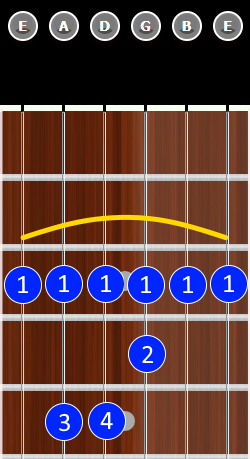
The fingering of the Barre Chord is you index finger across all 6 strings,
and your middle, ring, and pinky, form the E Major chord under it.
Here is the fingering of the Major Barre Chord (E format)
Just like when you played the open F chord, you can slightly turn your hand, so the index finger has more support.
Before fingering the entire chord, make sure that you can play all 6 strings with only the index finger bar.
After you're able to play it cleanly, where all the notes ring out, then add the other 3 fingers.
As stated above, whatever note is fretted on the low E (6th) string, that's the root of the chord.
This can be played anywhere on the neck, and the root note will be on the 6th string, low E string.
In the above examples, this is a G Major Barre Chord.
Major Seventh Barre Chord
To make a 7th Barre Chord, just play the Major Barre, and lift your pinky.
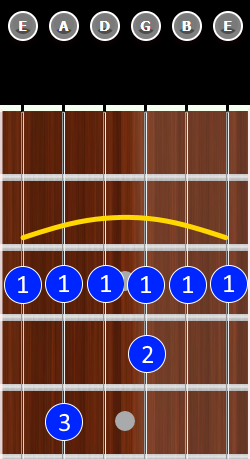
Minor Barre Chord
Minor Barre Chords are one note different from the Major Barre Chord.
Just lift your index finger on the G string, and you've made the Major a Minor Barre Chord
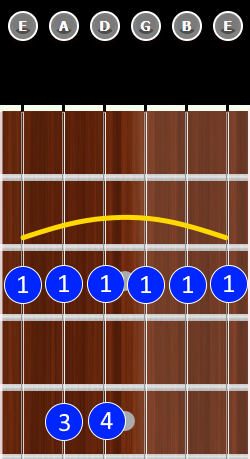
Minor Seventh Barre Chord
The Minor Seventh Barre Chord is one note from the Minor Barre Chord.
If you lift your pinky, the Minor becomes a Minor Seventh Barre Chord.
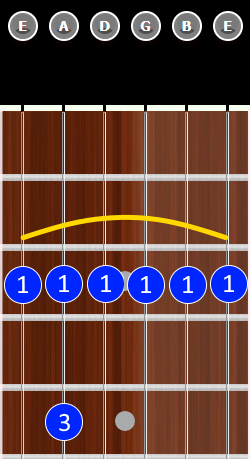
E Pattern Barre Chord Wrap Up
There are more types of chords, but these should get you started playing some of your favorite songs..
A Patten Barre Chords
As you've probably figured out, the A pattern Barre Chords are based on the A chord.
Play a Barre with your index finger, but this time only on the A string to the high E.
Leave the Low E (6th) string unplayed/muted.
The root note of the chord is the note on the A string. In this case, it's C.
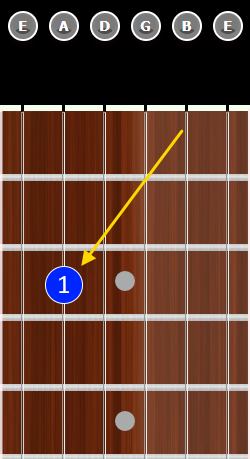
Major Barre Chord
There are 2 ways to play the A pattern Major Barre.
Using all 4 fingers, index bar, and fret each note with the other 3 fingers.
Or, using 2 fingers: Index bar, and the ring or pinky bar the others.
This is called a double bar.
Any way you play it, make sure the high E string rings out clean.
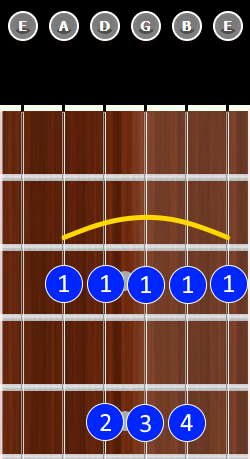
Major Seventh Barre Chord
For the Major 7th, start with the Major form, and lift your ring finger.
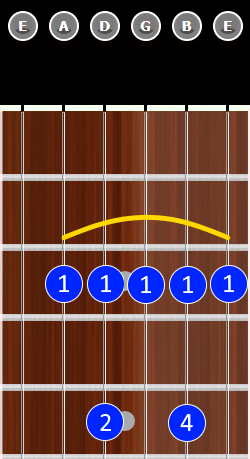
Minor Barre Chord
For the Minor, simply fret the A Minor open chord under the bar.
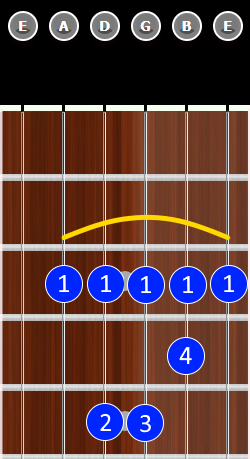
Minor Seventh Barre Chord
For the Minor 7th, start with the Minor form, and lift your ring finger.
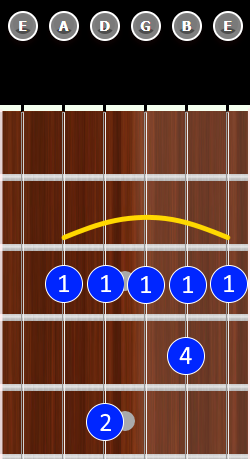
Wrap Up
Barre Chords give you a common chord pattern throughout the entire length of the fretboard.
For example, if you know the F Major Barre Chord, you just move it to another root note, and you're playing that root note's Major Chord.